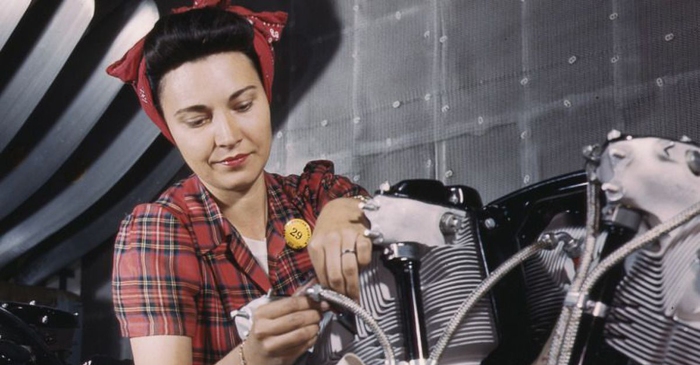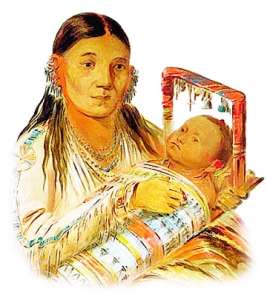Can capitalism liberate women?
 By DAVID KIELY and CHRISTINE MARIE
By DAVID KIELY and CHRISTINE MARIE
With the advent of the Trump administration and a conservative Congress, women and their allies marched in Washington and in hundreds of other cities on Jan. 21. The fact that the Washington march blossomed from a little seed into a huge national undertaking almost overnight is a sign that millions of people are ready to fight for the defense of women’s rights and the advancement of the women’s movement.
Any long-term strategy needs to start with a clear view of the root causes and fundamental bases of sexism and gender discrimination.
One of the most pressing questions facing our movement has to do with the relationship of women’s oppression to the capitalist economic system as a whole. Is it possible to complete the project of women’s liberation within our current social and economic system? How one responds to this question will determine, to a great degree, the kind of movement we set off to build. It will determine our effectiveness and ultimate success.
Women’s liberation groups have discussed strategy based on this question in every stage of the struggle over decades. Looking at the anthropological, historical, and theoretical elements that undergirded those previous debates is a prerequisite for our own deliberations. Together, these elements can give us a fundamental understanding of the inner workings of a gendered class society and how class and gender reinforce each other.
Women in indigenous society
Women’s subordination did not always exist. In fact, they played a role of leadership in early societies, before the development of distinct social classes.
Women’s social position, far from being biologically determined, is specific to the ways in which different class societies are organized economically. Women’s status has not gradually improved as society “evolved” from “primitive” to “civilized” but, on the contrary, has shifted, often negatively, with the development of new property relations and the kinds of social organization that accompany these relations.
Anthropologists such as Eleanor Leacock and Silvia Federici have established a significant body of research documenting pre-capitalist gender relations. Federici shows in her writings that indigenous society in the Americas was far more egalitarian for women than in Europe after the transition to capitalism. Many indigenous societies were based mainly on consensus, lacking most of the formal authority we find in later civilization, and women often controlled economic life.
According to Leacock in her book, “Myths of Male Dominance” (1981), pre-Columbian Iroquois women had a great deal of control over society, including the “the de facto power to veto declarations of war and to intervene to bring about peace.” These native women managed “the household,” but that had little in common with “household management” in patriarchal society.

In Iroquois society preceding the colonizers, management of the household meant control of all food stocks, treasury, and fur. This was everything they needed to survive and to trade amongst neighboring tribes. Women could exercise control over society because they were at the center of the public economic life of their society. The arrangement of production for sustenance and development did not itself lead to patriarchy. It was only the colonial introduction of new property relations into band society that began to tie production to patriarchal norms.
In fact, the European interlopers were often shocked at the kinds of gender equality they found in indigenous tribes in the Americas. Leacock described one account from a Jesuit priest regarding relationships of 17th-century Montagnais-Naskapi life: “Noting that women had ‘great power,’ he expressed his disapproval of the fact that men had no apparent inclination to make their wives ‘obey’ them or enjoin sexual fidelity upon them. He lectured the Indians of this failing, reporting in one instance, ‘I told him then that he was the master and that in France women do no rule their husbands.’”
The Jesuits who first encountered the Montagnais-Naskapi in the 17th century in Canada had attitudes that themselves were products of a dramatic transformation of property relations and the status of women in Europe. Silvia Federici, author of “Caliban and the Witch,” describes the way that the enclosures of communal land and the devaluation of peasant women’s “home work” were accompanied by a devastating reduction in women’s rights. From the 15th to the 17th century, Federici claims, women were stripped of their right to perform abortions, as well as their right to professions such as midwives and medical practitioners, and rape stopped being a punishable crime.
By the end of this social transformation, women had lost significant social power. The transition from feudalism to capitalism sharpened, rather than decreased, the use of patriarchal principles to organize society.
Women under capitalism
Capitalism is a system that runs on profit making and the continuous production of commodities. If the system stopped facilitating the production of all of the commodities we consume, the economy would collapse. In addition to boosting the production of commodities, the capitalist system must reproduce the class conditions that make profit possible. In part, this means the reproduction of a class of workers who must labor for wages because we do not own any means to produce commodities ourselves.
To keep the working class producing, workers must replace themselves with children, and these children must be raised, educated into the workforce, and maintained as part of the workforce. Each worker has to find or create social mechanisms to help deal with occupational illnesses, the stress and physical wear and tear of work, and to tend to them when they are old or disabled.
Marxist–feminist Cinzia Arruzza, in her paper, “Functionalist, Determinist, Reductionist: Social Reproduction Feminism and its Critics,” described some of the conditions of work under capitalism. One of the main features of wage labor, she states, is to keep the worker in a condition of “dispossession.” This is done through paying the worker less than the amount they produce in sales for the boss, but also by appropriating their skills into machinery. Thus, the worker is “not just reproducing herself as a generic human being with needs and desires; she is also reproducing herself … as a member of a specific class characterized by dispossession and exploitation.”
Ideally, capitalists would always keep workers working, while providing meager wages to cover costs of living. However, we need some amount of time to rest, eat, and take care of ourselves and our families. We can call the labor used in maintaining living conditions, necessary labor. In capitalism, the bulk of necessary labor is done by women, but can also be done by men, children, or even service workers.
Capitalists want to continue to increase profitability, and thus there is an incentive to reduce necessary labor by employing those doing domestic labor. Yet, it must allow for necessary labor; otherwise, the labor supply would ultimately be reduced, or even decimated. This is a contradiction. Necessary labor should be reduced to increase profitability, but it should also be increased to increase labor supply and create the condition of dispossession for the worker. During World War II when women were critical to production in the United States, the elites rushed to set up child-care centers, but after the war used all the means at their disposal to push women out of full-time work.
The World War II experience shows that social reproduction can be arranged in many ways. Within the last 100 years, domestic life for working people has generally been the result of women’s unpaid labor, but occasionally, portions have been taken up by the state, and most recently, relatively privatized. These variations are not unusual, and change has been a permanent feature of the capitalist mode of production. Education, for example, was the private responsibility of families. Once, cooking and cleaning were assigned to children. But whatever the setup, under capitalism, women have remained subordinate.
The shift of some necessary labor from inside the home to outside has not produced women’s liberation. Rather than women performing all the necessary labor at home, working women pay a substantial amount of their wages to privatized firms. In these firms, because of their seemingly “natural” place in the home, women can be paid deliberately meager wages. Because the economy is set up so that all family members need to work, women are forced to become part of a low-wage workforce that the employers can use to drive down the wages of all.
Because capitalism cannot allow for women to be completely liberated from the necessary labor of social reproduction, they continue to maintain a discriminatory wage system. Overall, women function as what socialists call a “reserve army of labor,” buffeted to and fro as the capitalists negotiate competition and the swings of the business cycle.
As long as society is organized to maximize the production of profit rather than to fulfill human needs, full women’s liberation and an end to gender discrimination are impossible. To end this kind of oppression once and for all, we must base the organization of human society on the needs of the majority and make all the elements of social reproduction—nurturing, education, health, child care, elder care, and all that is needed for a satisfying life—the responsibility of society as a whole. This kind of system is called socialism.
How do we get there?
Overthrowing capitalism and replacing it with a socialist system that puts human needs before profits is a gigantic task that can only be accomplished when the majority of the working people in the country are convinced of its necessity. That majority will have tremendous power at its disposal, and if unified and politically engaged, can use its position in production, transportation, and communications to put themselves at the head of a government capable of reorganizing everything.
History (i.e., the 1917 Russian Revolution) tells us that this kind of reorganization can provide the material basis for a radical transformation of the status of women. Once they have freed themselves of the burden of filling the coffers of Wall Street, Exxon, and the Pentagon, working people could immediately use the surplus from production to provide each other 24-7 child care and elder care, universal health care, full reproductive justice, enriching public education, food sovereignty, mitigation of environmental threats, and housing and mass transportation for all.
A new women’s movement, visible through massive marches like the one on Jan. 21, independent of the corporate parties, and committed to strengthening and interacting with the movements of labor, immigrant rights, and for Black Lives, must shape the agenda of that majority so that the material potential will become social reality. The most direct way to become part of the process is to join a socialist group.
Top photo: To make up for the World War II labor shortage, women in North America were recruited into the factories, but pushed out after the war. Below: An Iroquois woman and child.

No comments:
Post a Comment